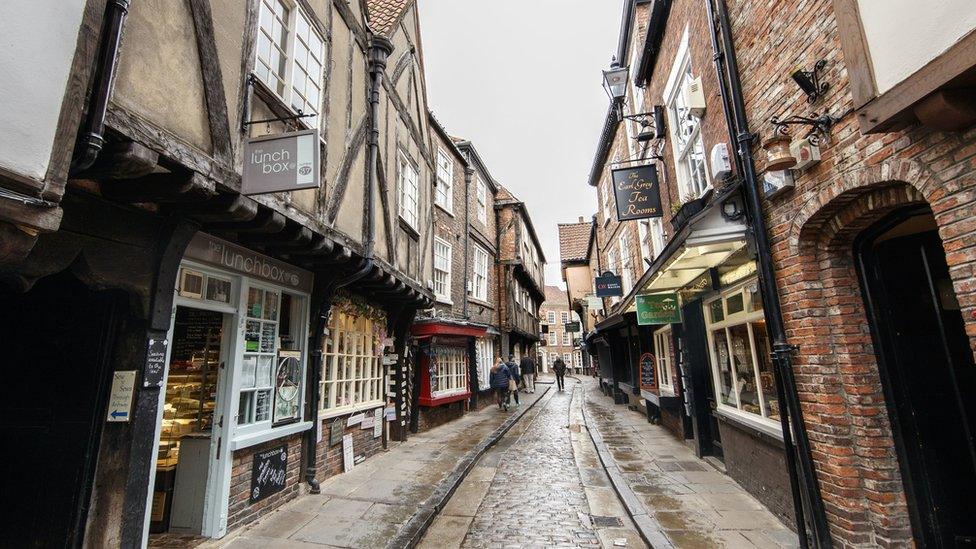The iron age sites seeking world heritage status
- Published
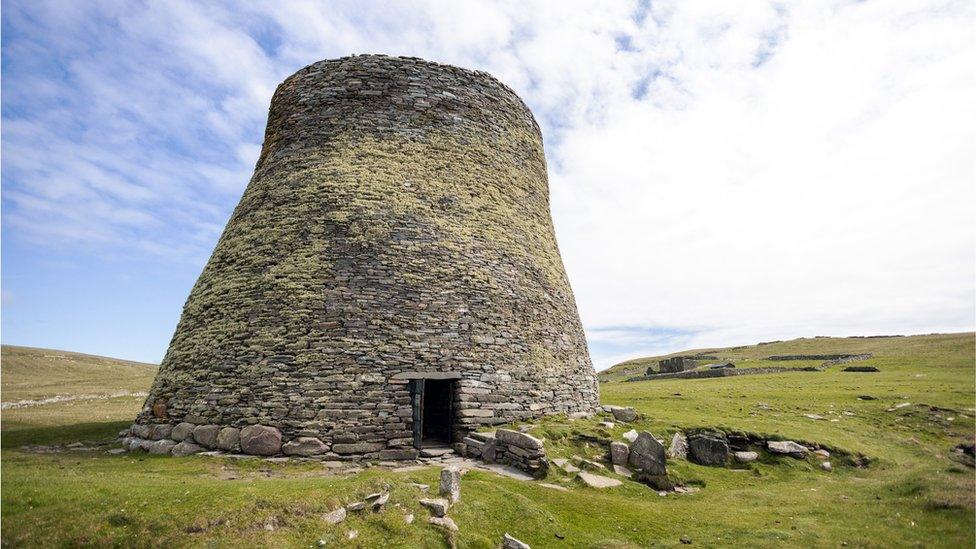
The broch at Mousa was built more than 2,000 years ago
Three iron age settlements in Shetland are in the running to win Unesco World Heritage status.
Collectively known as the Zenith of Iron Age Shetland, they are among five sites put forward by the UK government to join the prestigious list.
If successful, they will join Stonehenge, Hadrian's Wall and Australia's Great Barrier Reef as world heritage sites, considered to be of "outstanding value to humanity".
The Zenith of Iron Age Shetland includes the settlements and surviving structures of Mousa, Old Scatness and Jarlshof.
Built in stone by the inhabitants of the largely treeless islands, they are described as the "zenith of prehistoric architectural achievement in Northern Europe" in a submission published on the Unesco website., external
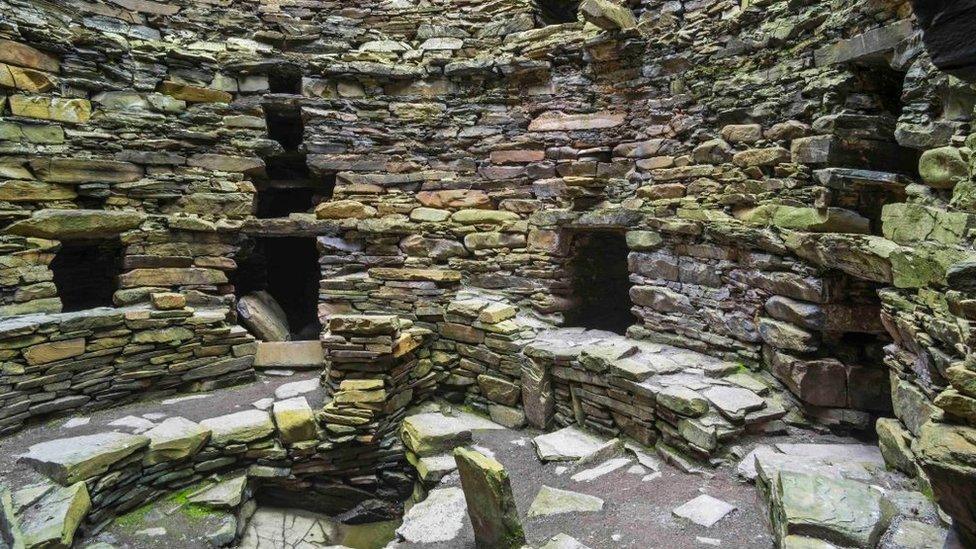
The broch at Mousa is hailed as an "exceptional feat of engineering"
The broch at Mousa has been described as the best-preserved in Scotland.
Brochs - meaning strong or fortified place in Old Norse - are massive, circular, double-skinned drystone towers which would have dominated the landscape of northern and western Scotland during the iron age.
The structure at Mousa, which is 13m (42ft) tall, is thought to have been constructed in 300BC.
It is described as "an exceptional feat of engineering for the society of that period" in the UK's nomination to Unesco.

There is evidence that Old Scatness was occupied for more than 1,000 years
Old Scatness is a dry stone broch and iron age village which was accidentally uncovered in 1975 as a result of plans to put a road through the site.
Then a "pristine iron age time capsule", it was excavated between 1995 and 2006.
Modern excavation techniques were used, ensuring a full understanding of the site, according to the submission to Unesco.
It provides evidence of the large, single-walled roundhouses that succeeded brochs.
And it shows that iron age society lasted on the site for more than 1,000 years, detailing how broch society developed and flourished.
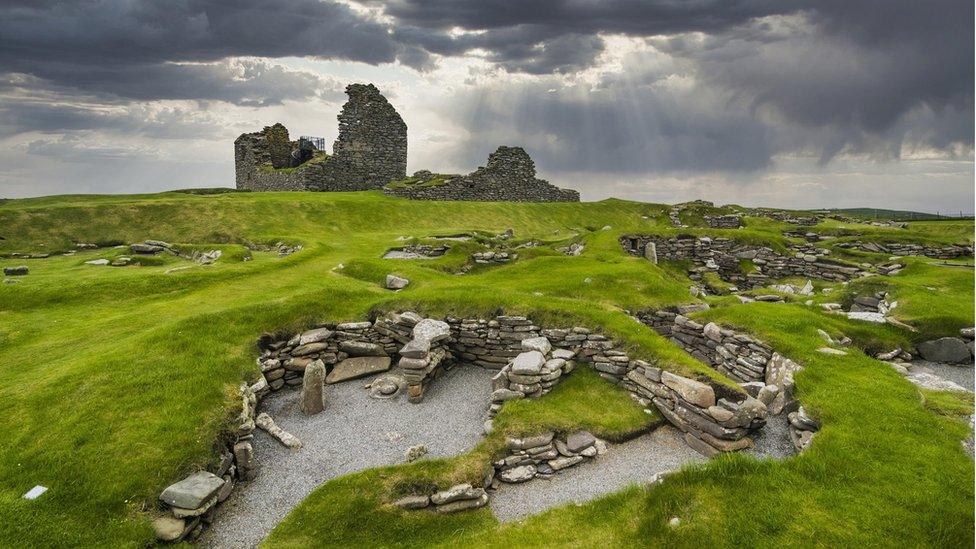
Jarlshof was a place of human settlement for more than 4,000 years
The third site in the collection is Jarlshof, which is less than a mile from Old Scatness.
Neolithic people first settled at Jarlshof in around 2,700BC and it remained in use until the 1600s.
Discoveries on the site include oval-shaped Bronze Age houses, an Iron Age broch and wheelhouses, Norse long houses, a medieval farmstead, and a laird's house dating from the 1500s.
"There is no comparable rural Viking township in existence, even in the Scandinavian homelands," the report to Unesco adds.
"It represents a time of transformation in culture and lifestyle: a cultural upheaval which strongly influences life today, defining Shetland within the North Atlantic."
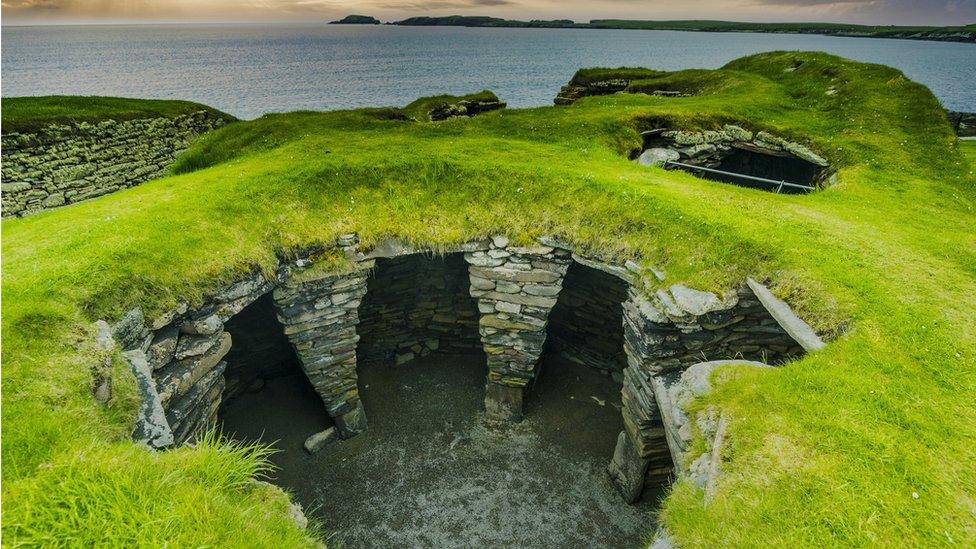
Jarlshof remained in use until the 1600s
The UK government's "tentative list" is published about every 10 years and sets out the locations it is felt have the best chance of being recognised by Unesco as World Heritage sites.
The Department for Culture, Media and Sport confirmed the other new sites are York; Birkenhead Park in Merseyside; the East Atlantic Flyway - an area used by migrating birds in northern and eastern England; and the Little Cayman Marine Parks and Protected Areas in the UK overseas territory of the Cayman Islands.
Scotland currently has six World Heritage sites: the Antonine Wall; Heart of Neolithic Orkney; New Lanark; the Old and New Towns of Edinburgh; St Kilda; and the Forth Bridge.
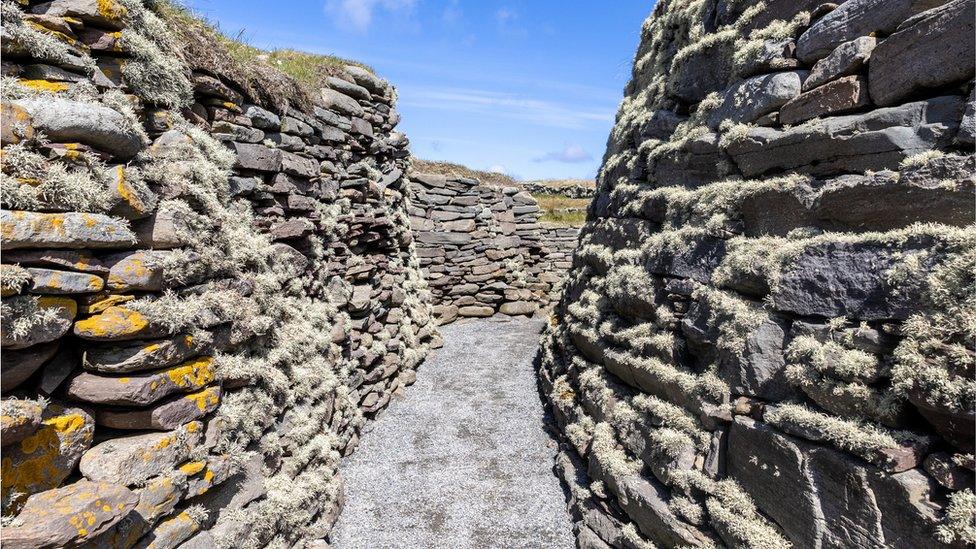
Drystone walls at Jarlshof
All images are copyrighted
Related topics
- Published10 April 2023
